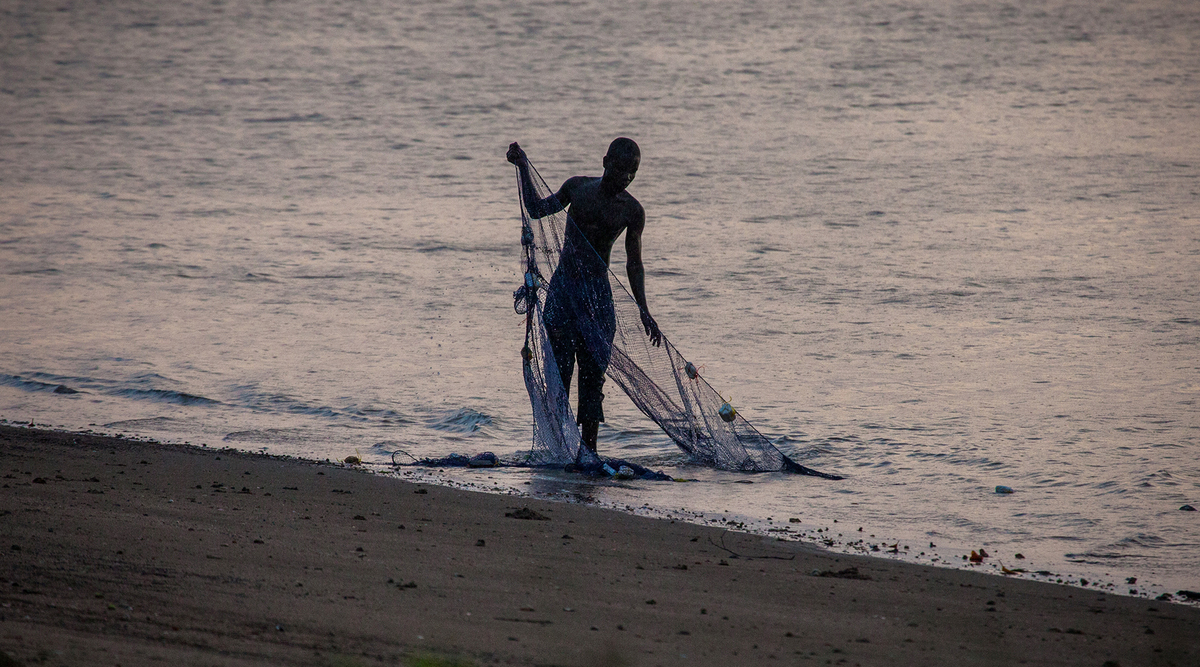Sharks, Skates, and Rays
Sharks, rays, and their cartilaginous relatives are one of the world’s oldest and most diverse vertebrate groups with over a thousand species found in a huge range of habitats, from the Amazon River to the ocean’s deepest points, and they provide a range of benefits to society. They help to maintain healthy and productive ocean ecosystems via their role as top predators and also play important roles in coastal livelihoods and food security through fisheries and tourism. As with many higher-level predators, sharks often grow slowly, have few young, and range widely—and this has made them vulnerable to rapid population declines globally: sharks are often the first species whose populations crash in unsustainable, unselective fisheries.
Our Strategy
The core of WCS’s global shark work from 2020 to 2030 will focus on overcoming this management gap. We will demonstrate that comprehensive policy reforms and their implementation at a country-wide level—which are informed by robust research on shark populations and fisheries and implemented through locally-relevant practical approaches—can reduce overfishing of some of the world’s most threatened species and eventually lead to population recovery.
We will deliver this vision via the 10x10 initiative: Comprehensive, science-based, well-implemented shark management reforms in 10 key geographies across the globe over the next 10 years (10x10, from 2020 to 2030). Successful delivery of this initiative will establish measurable conservation impact by halting population declines, preventing extinctions, and moving shark populations towards recovery.
To achieve this, we will take an integrated approach, delivered through a holistic program of work that focuses on management reforms in three priority areas in each country or region:
- Protecting species
- Managing fisheries
- Controlling trade
Each of the above will be delivered through building strong capacity and institutions, and informed by robust ecological and socio-economic research. The document below provides background on why and where we work on sharks, and identifies how we can build on our work to date to deliver the fundamental global change these species need.
Where We Will Work
The 10x10 sites straddle the globe, in identified hotspots that all show the same key characteristics: intense fishing pressure, limited management, and high numbers of threatened species within the priority families. This is where we will prioritize our work on the strategies three key pillars in the next decade, while further researching other sites that should also benefit from this targeted, comprehensive shark conservation approach.
New Tools to Curtail Illegal Trade
The trade in shark and ray parts is valued at a billion dollars annually, but until recently it has been poorly regulated, driving these slow growing predators towards extinction.
Over the last decade, the United Nations Convention on International Trade in Endangered Species of Wild Fauna and Flora (CITES) has listed an increasing number of shark and ray species in the Appendices of this international treaty to combat the threat of this trade. But these measures need to be implemented and well enforced if they are to be effective.
Now, a new one-stop visual identification tool has been developed in the form of a three-guide series to provide customs officials the information they need to seize any shark products that are being traded illegally.
Related News
-
June 15, 2023
Reef Sharks are at a Much Higher Risk of Extinction than Previously Thought
A new study, featuring more than 150 researchers worldwide, including Wildlife Conservation Society (WCS) scientists who collected data at WCS programs in Mesoamerica, South East Asia, Melanesia and East Africa, says overfishing is driving reef...
Read the story
-
November 25, 2022
Breaking News at CITES CoP19 for Sharks: Shark Proposals Adopted in Full at Conclusion of Conference in Panama (English, Spanish, French)
With the final adoption of proposals to regulate the trade of requiem sharks and hammerheads as governments conclude the 19th meeting of the Conference of the Parties to the Convention of International Trade in Endangered Species of Wild Fauna and...
Read the story
-
October 18, 2022
Underwater Camera Trap Video Confirms 1,100-Mile (1800-km) Swim of Tagged Great White Shark
Research led by the Wildlife Conservation Society (WCS) and the Instituto Oceanográfico de Moçambique (InOM), using baited remote underwater video (BRUV) surveys to assess sharks and rays off southern Mozambique, has recently recorded a tagged...
Read the story
View All News
Reef Sharks are at a Much Higher Risk of Extinction than Previously Thought
A new study, featuring more than 150 researchers worldwide, including Wildlife Conservation Society (WCS) scientists who collected data at WCS programs in Mesoamerica, South East Asia, Melanesia and East Africa, says overfishing is driving reef...
Read the storyBreaking News at CITES CoP19 for Sharks: Shark Proposals Adopted in Full at Conclusion of Conference in Panama (English, Spanish, French)
With the final adoption of proposals to regulate the trade of requiem sharks and hammerheads as governments conclude the 19th meeting of the Conference of the Parties to the Convention of International Trade in Endangered Species of Wild Fauna and...
Read the storyUnderwater Camera Trap Video Confirms 1,100-Mile (1800-km) Swim of Tagged Great White Shark
Research led by the Wildlife Conservation Society (WCS) and the Instituto Oceanográfico de Moçambique (InOM), using baited remote underwater video (BRUV) surveys to assess sharks and rays off southern Mozambique, has recently recorded a tagged...
Read the storySign Up for Email Updates
Get news from the field and learn about ways you can help Earth’s most threatened species.






